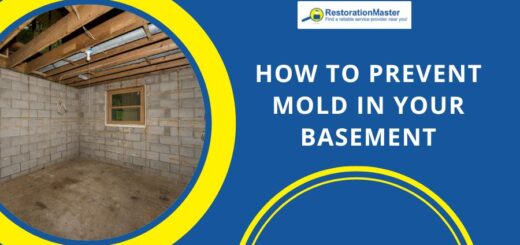10 Facts about Mold
You have certainly seen ugly moldMold is a type of fungus that grows in damp or humid conditi... More patches in the corners of the basement. You have probably felt musty odorAn odor is a smell, often detectable by the human nose, whic... More in the bathroom and found moldMold is a type of fungus that grows in damp or humid conditi... More on the shower curtains. You may have heard that moldMold is a type of fungus that grows in damp or humid conditi... More is harmful and can cause various health problems. You surely know that it thrives in humid environments and spreads very quickly and easily. But do you know that moldMold is a type of fungus that grows in damp or humid conditi... More needs less than 48 hours to begin growing? Or that dead moldMold is a type of fungus that grows in damp or humid conditi... More sporesSpores are microscopic reproductive units of fungi or mold t... More are just as harmful as live ones? Or that modern-day building practices actually promote moldMold is a type of fungus that grows in damp or humid conditi... More growth?
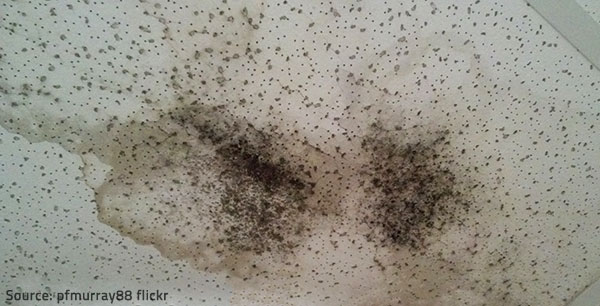
MoldMold is a type of fungus that grows in damp or humid conditi... More does not look particularly good as home decor.
There are many important facts about mold that people are not commonly aware of. Yet, knowing them can help you better protect yours and your family’s health, as well as the structural integrity and value of your home. Here is everything you need to know about moldMold is a type of fungus that grows in damp or humid conditi... More:
1) Mold Requires Moisture and Organic Food to Grow
MoldMold is a type of fungus that grows in damp or humid conditi... More is a kind of fungiFungi are a group of organisms, including mold, mildew, and ... More that reproduces by making tiny sporesSpores are microscopic reproductive units of fungi or mold t... More which can survive extremely harsh weather conditions and spread easily over large areas. MoldMold is a type of fungus that grows in damp or humid conditi... More sporesSpores are microscopic reproductive units of fungi or mold t... More exist everywhere in the outdoor environment and can get indoors thorough open doors, windows, air ducts, vents, etc. or even attached to clothes, shoes, and bags. Once the moldMold is a type of fungus that grows in damp or humid conditi... More sporesSpores are microscopic reproductive units of fungi or mold t... More get into your home, they will wait for the right conditions to start developing.
The purpose of moldMold is a type of fungus that grows in damp or humid conditi... More in the eco-system is to decompose dead organic material. Therefore, it thrives in warm, humid conditions where organic “food” is available in abundance. Your home provides an ample food source (all kinds of organic materialsOrganic materials are derived from living organisms, such as... More, such as wood, paper, leather, fabric and upholstery, grout, paint, drywall, insulationInsulation is a material used in buildings to reduce the tra... More materials, carpet, etc.), so as soon as there is any source of moisture – floodingFlooding is the overflow or accumulation of water in areas t... More, leaky roofs, pipe leaks, condensation, steam from cooking and showers, etc., the moldMold is a type of fungus that grows in damp or humid conditi... More sporesSpores are microscopic reproductive units of fungi or mold t... More will begin reproducing and spreading all over your home.
2) There are over 10,000 species of mold but only 5 of them are commonly found indoors
Most household molds belong to one of the following five types:
-
- Alternaria moldMold is a type of fungus that grows in damp or humid conditi... More is usually found in buildings that have suffered some kind of water damage. It can appear black, grey, or dark brown and has a wooly or down-like texture. It can cause various allergic reactions and asthma attacks;
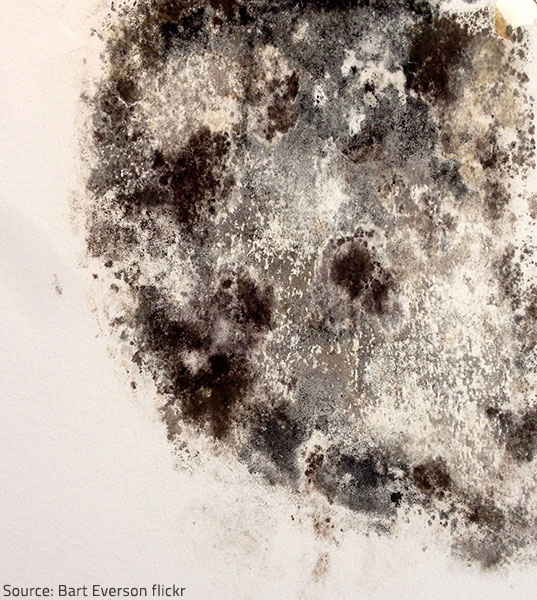
The notorious black moldMold is a type of fungus that grows in damp or humid conditi... More is not as common as other, less harmful types of household molds.
- Aspergillus is the most common type of household moldMold is a type of fungus that grows in damp or humid conditi... More, especially in warmer climates. It can be grey, brown, yellow, green, white, or black in color. Aspergillus moldMold is a type of fungus that grows in damp or humid conditi... More causes not only allergic reactions, but also respiratory infections and inflammation of the lungs in people with weak immune systems;
- Cladosporium can grow in lower temperatures than other kinds of moldMold is a type of fungus that grows in damp or humid conditi... More. It has a characteristic black or olive-green color and may trigger hay fever and asthma symptoms;
- Penicillium is usually found on carpeting, wallpaper, and insulationInsulation is a material used in buildings to reduce the tra... More. It looks blue or green and produces strong musty odorAn odor is a smell, often detectable by the human nose, whic... More;
- StachybotrysStachybotrys is a type of black mold (often called “black ... More chartarum, also known as “black mold”, produces toxic compounds called mycotoxinsMycotoxins are toxic substances produced by certain types of... More that can cause severe health problems, such as respiratory problems, asthma attacks, chronic sinus infections, fatigue, and depression. The toxic black moldMold is a type of fungus that grows in damp or humid conditi... More has a characteristic musty odorAn odor is a smell, often detectable by the human nose, whic... More and appears only on surfaces that have been in prolonged contact with water.
3) Mold develops very quickly but often remains hidden for a long time
When all the right conditions are present – moisture, ample food, and a temperature of 41 degrees to 100 degrees Fahrenheit, moldMold is a type of fungus that grows in damp or humid conditi... More will begin growing within 24 to 48 hours. However, it can often remain hidden until the sporesSpores are microscopic reproductive units of fungi or mold t... More have already affected large areas of your property and caused considerable structural damage. This is so because moldMold is a type of fungus that grows in damp or humid conditi... More usually starts growing in very inconspicuous areas of the house – inside walls, behind leaky appliances, within insulationInsulation is a material used in buildings to reduce the tra... More, throughout the HVAC system, in crawl spaces, and in other damp, dark places (moldMold is a type of fungus that grows in damp or humid conditi... More doesn’t need light to grow, which is why it is often found in poorly lit areas of the home).
Therefore, in order to prevent serious moldMold is a type of fungus that grows in damp or humid conditi... More problems, you need to watch out for the very first signs of moldMold is a type of fungus that grows in damp or humid conditi... More growth in your property (musty odorAn odor is a smell, often detectable by the human nose, whic... More, deteriorating household materials, etc.) and take quick and efficient measures to fix the source of the problem and get rid of the moldMold is a type of fungus that grows in damp or humid conditi... More sporesSpores are microscopic reproductive units of fungi or mold t... More before they have resulted in severe structural damage and health issues.
4) Mold growth is a sign of water damage
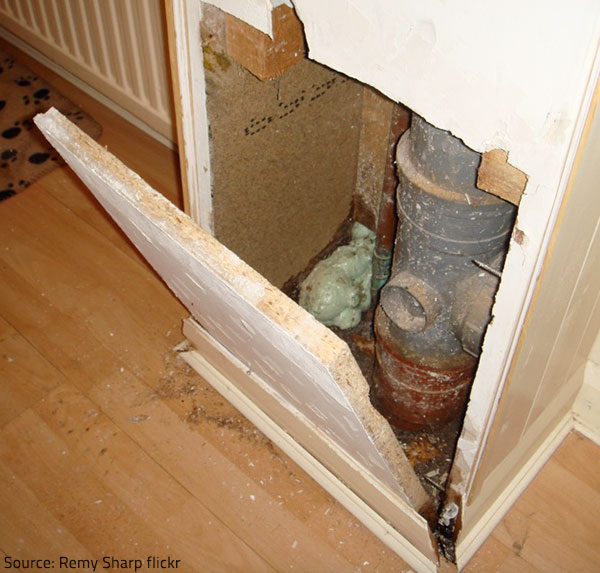
MoldMold is a type of fungus that grows in damp or humid conditi... More cannot develop in your home unless there is some source of excessive moisture.
Unless you have experienced a recent flood or sewer backup, you may have no reason to suspect water damage to your home. The presence of moldMold is a type of fungus that grows in damp or humid conditi... More, however, should alert you of a hidden problem (as already mentioned, moldMold is a type of fungus that grows in damp or humid conditi... More sporesSpores are microscopic reproductive units of fungi or mold t... More cannot develop unless there is some source of excessive moisture). Therefore, if you detect a musty smell in the basement or attic, or see moldMold is a type of fungus that grows in damp or humid conditi... More patches on the ceilings or walls of your home, you need to carefully inspect your property and find the source of the moisture – it may be a leaky pipe, or a leaky roof, or a malfunctioning appliance, or even poor insulationInsulation is a material used in buildings to reduce the tra... More that results in too much condensation. In the best case scenario moldMold is a type of fungus that grows in damp or humid conditi... More may be caused by inadequate air exchange and high indoor humidityHumidity is the amount of moisture or water vapor present in... More levels resulting from water evaporating from home plants or dryingDrying is the process of removing moisture from materials, s... More clothes, or steam from the kitchen or bathroom.
Anyway, you need to take adequate precautionary measures in order to prevent further problems. If you leave moldMold is a type of fungus that grows in damp or humid conditi... More untreated and don’t remove the source of excessive moisture, the sporesSpores are microscopic reproductive units of fungi or mold t... More will continue to reproduce and affect a larger area of your home, compromising its structural integrity and reducing its value.
5) Your homeowner’s insurance may exclude mold damage
The standard homeowner’s insuranceHomeowner’s insurance is a policy that provides financial ... More policy may or may not cover mold damage, depending on the cause of the moldMold is a type of fungus that grows in damp or humid conditi... More problem. If moldMold is a type of fungus that grows in damp or humid conditi... More results from a covered water loss, such as the sudden or accidental discharge or overflow of water or steam from the plumbing system or a household appliance, the cost of mold remediationMold remediation is the process of identifying, removing, an... More will be covered under home insurance, because the reason for the claim is the covered peril, not the moldMold is a type of fungus that grows in damp or humid conditi... More itself. Some insurance policies, however, contain exclusions, specifying that they will not cover mold removal and remediation, regardless of the source of the problem. Besides, standard insurance policies exclude flood damage and do not cover water damage as a result of neglected home maintenanceMaintenance is the routine care, inspection, and repair of a... More – long-term roof leaks, landscaping or drainage problems, condensation, etc.
Even when moldMold is a type of fungus that grows in damp or humid conditi... More damage is covered, there may be limitations on the coverage (most policies cap it at a certain amount). If you want to maximize your coverage, you can purchase a moldMold is a type of fungus that grows in damp or humid conditi... More rider as an add-on to your existing insurance policy.
6) Mold can cause various health problems
It is a proven fact that prolonged exposure to moldMold is a type of fungus that grows in damp or humid conditi... More may cause a variety of allergy symptoms and other serious health issues:
- Chronic fatigue and headaches;
- Dizziness and disorientation;
- Sneezing, runny nose, or nasal congestion;
- Itchy eyes and blurry vision;
- Coughing and respiratory problems;
- Skin irritations and rashes;
- Sinus infections and chronic sinusitis;
- Asthma and inflammation of the lungs.
Toxic black moldMold is a type of fungus that grows in damp or humid conditi... More, in particular, may have very serious long-term health effects. It produces mycotoxinsMycotoxins are toxic substances produced by certain types of... More that can cause a number of circulatory symptoms and vascular problems when inhaled – irregular heartbeat, heart inflammation, low blood pressure, internal or external hemorrhaging, etc.

The health effects of moldMold is a type of fungus that grows in damp or humid conditi... More can vary from mild allergic symptoms to severe respiratory problems.
The effects of moldMold is a type of fungus that grows in damp or humid conditi... More exposure can vary considerably from one person to the next (with young children, pregnant women, elderly people, and individuals with chronic diseases and weaker immune systems being most at risk), but according to recent studies 1 in every 4 people has genetic pre-disposition to moldMold is a type of fungus that grows in damp or humid conditi... More illness – the so called Chronic Inflammatory Response Syndrome (CIRS).
7) Mold is very difficult to get rid of
MoldMold is a type of fungus that grows in damp or humid conditi... More is often found in areas that are difficult to reach and remediate. It spreads very quickly and affects not only building materials, but also furniture pieces, fabrics, books, and other personal possessions. The sporesSpores are microscopic reproductive units of fungi or mold t... More grow within the porousPorous describes a material that contains small openings or ... More materials, so the only way to remove moldMold is a type of fungus that grows in damp or humid conditi... More completely is to replace the affected items.
What’s more, most DIY mold removal methods provide only a temporary solutionA solution is a homogeneous mixture of two or more substance... More to the problem: household cleaners are not strong enough to eliminate the fungiFungi are a group of organisms, including mold, mildew, and ... More and paints only hide the problem. Bleach kills the sporesSpores are microscopic reproductive units of fungi or mold t... More but dead sporesSpores are microscopic reproductive units of fungi or mold t... More can be just as harmful as the living ones – some moldMold is a type of fungus that grows in damp or humid conditi... More species are toxic in both a live form and a dead form, others may stay dormant for a long time until the right conditions appear to allow them to grow again, etc.
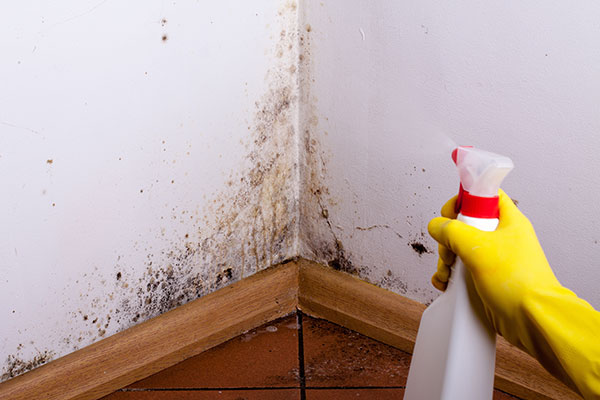
MoldMold is a type of fungus that grows in damp or humid conditi... More removal and remediation is better left to the specialists.
The only sure way to get rid of moldMold is a type of fungus that grows in damp or humid conditi... More for good is to use professional mold remediation services. The experienced moldMold is a type of fungus that grows in damp or humid conditi... More removal specialists will discover all the moldMold is a type of fungus that grows in damp or humid conditi... More (visible, hidden, dormant) in your property, will use advanced equipment and powerful cleaning agents to remove the sporesSpores are microscopic reproductive units of fungi or mold t... More, repairRepair is the act of fixing or restoring damaged property, m... More any related damage, disinfect the contaminated area, and purify the air. Your home will be completely mold-free, fresh, and safe.
8) Mold growth can be prevented
In modern times, moldMold is a type of fungus that grows in damp or humid conditi... More has become a very common and serious issue. It is mainly due to the fact that building practices nowadays actually promote moldMold is a type of fungus that grows in damp or humid conditi... More development – building materials are very porousPorous describes a material that contains small openings or ... More and susceptible to moldMold is a type of fungus that grows in damp or humid conditi... More growth; homes are built to be energy efficient, so they are air-tight and lack proper ventilationVentilation is the process of exchanging or circulating air ... More; water pipes run throughout the home hidden inside walls and insulationInsulation is a material used in buildings to reduce the tra... More, etc. This makes moldMold is a type of fungus that grows in damp or humid conditi... More preventionPrevention refers to actions taken to reduce the likelihood ... More quite a difficult task. Yet, there are some efficient precautionary measures you can take to inhibit moldMold is a type of fungus that grows in damp or humid conditi... More growth in your home:
- Ensuring good air circulation – keeping windows open, running bathroom fans, keeping air ducts clean and in good condition – can help reduce the risk of moldMold is a type of fungus that grows in damp or humid conditi... More growth;
- Keeping indoor humidityHumidity is the amount of moisture or water vapor present in... More levels below 45 percent can inhibit moldMold is a type of fungus that grows in damp or humid conditi... More growth;
- Keeping your property in good repairRepair is the act of fixing or restoring damaged property, m... More (roofs and foundations, plumbing system, HVAC system) can prevent excessive moisture from entering your home and causing moldMold is a type of fungus that grows in damp or humid conditi... More growth;
- Inspecting your property at regular intervals (and especially after major storms, torrential rains, snow meltdown, etc.) can help detect moldMold is a type of fungus that grows in damp or humid conditi... More growth in its early stages and prevent it from spreading any further;
- Adding mold-inhibitors to paints before application can reduce the potential for moldMold is a type of fungus that grows in damp or humid conditi... More growth;
- Removing already affected materials can help prevent moldMold is a type of fungus that grows in damp or humid conditi... More sporesSpores are microscopic reproductive units of fungi or mold t... More from contaminating other items.
If you keep your home moisture-free and properly ventilated, you have every chance to prevent mold formation and mold-related problems.

Did you know that penicillin is actually a purified moldMold is a type of fungus that grows in damp or humid conditi... More?
9) Mold can be useful
MoldMold is a type of fungus that grows in damp or humid conditi... More is not necessarily bad. It plays an essential role in the ecosystem – it breaks down dead organic matter, such as dead leaves, trees, etc., and recycles it into the environment. Certain species of moldMold is a type of fungus that grows in damp or humid conditi... More are commonly used as fermenting agents, others are engineered to make delicacy cheeses. MoldMold is a type of fungus that grows in damp or humid conditi... More is even used in drug production – the antibiotic penicillin is a purified moldMold is a type of fungus that grows in damp or humid conditi... More!
10) Interesting facts about mold
- MoldMold is a type of fungus that grows in damp or humid conditi... More is used in biological warfare;
- Christmas trees can be a source of moldMold is a type of fungus that grows in damp or humid conditi... More sporesSpores are microscopic reproductive units of fungi or mold t... More;
- MildewMildew is a type of fungus that grows on damp surfaces, typi... More is a type of moldMold is a type of fungus that grows in damp or humid conditi... More that remains on the surface of the affected materials;
- Each year moldMold is a type of fungus that grows in damp or humid conditi... More destroys more wood than all the fires and termites combined;
- The World Health Organization acknowledges that moldMold is a type of fungus that grows in damp or humid conditi... More is a health hazard;
- The cost of repairing moldMold is a type of fungus that grows in damp or humid conditi... More problems in homes around the United States is approximately 73 billion dollars per year.
MoldMold is a type of fungus that grows in damp or humid conditi... More facts can be shocking, indeed. What matters most is learning all you can about moldMold is a type of fungus that grows in damp or humid conditi... More to help you better handle moldMold is a type of fungus that grows in damp or humid conditi... More issues in your home.












